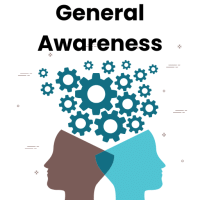SSC CGL Exam > SSC CGL Questions > Directions: In these questions, the relations...
Start Learning for Free
Directions: In these questions, the relationship between different elements is shown in different statements. The statements are followed by two conclusions. Choose the correct answer given below:
Statements: M ≤ N; M > P ≥ O = H ≤ L ≤ Z
Conclusions: I. L ≥ M II. O ≤ Z
Statements: M ≤ N; M > P ≥ O = H ≤ L ≤ Z
Conclusions: I. L ≥ M II. O ≤ Z
- a)Only conclusion I is true
- b)Only conclusion II is true
- c)Both conclusion I and II is true
- d)Either conclusion I or II is true
Correct answer is option 'B'. Can you explain this answer?
Verified Answer
Directions: In these questions, the relationship between different ele...
Combining statements: M ≤ N; M > P ≥ O = H ≤ L ≤ Z
Checking C1: L ≥ M
Here, M > P ≥ O = H ≤ L
We can clearly see that the signs between L and M get reversed therefore the relation between L and M cannot be formed.
Therefore, C1 doesn’t follow.
Checking C2: O ≤ Z
Here, M > P ≥ O = H ≤ L ≤ Z
The common sign between O and Z is =, ≤.
So, O ≤ Z follows.
Therefore, C2 follows.
Hence, Option B is correct.
Most Upvoted Answer
Directions: In these questions, the relationship between different ele...
Understanding the Statements
To analyze the relationship from the given statements, let's break it down:
- M ≤ N
- M > P ≥ O = H ≤ L ≤ Z
This shows the following relationships:
1. M is less than or equal to N.
2. M is greater than P, which is greater than or equal to O.
3. O is equal to H, and both are less than or equal to L.
4. L is less than or equal to Z.
Evaluating the Conclusions
Let's examine the conclusions one by one:
Conclusion I: L ≥ M
- From the statements, we know M ≤ N and M > P ≥ O = H ≤ L.
- This means L is greater than or equal to O (which is equal to H), and since M is greater than P and P is at least equal to O, we do not have a direct relationship that proves L is definitely greater than or equal to M.
- Therefore, Conclusion I is not necessarily true.
Conclusion II: O ≤ Z
- From the relationships, we see that O = H and L ≤ Z.
- Since L is greater than or equal to O, and L is also less than or equal to Z, it follows that O (which is equal to H) must indeed be less than or equal to Z.
- Therefore, Conclusion II is true.
Final Assessment
- Based on the analysis, only Conclusion II is true.
- Thus, the correct answer is option B: Only conclusion II is true.
To analyze the relationship from the given statements, let's break it down:
- M ≤ N
- M > P ≥ O = H ≤ L ≤ Z
This shows the following relationships:
1. M is less than or equal to N.
2. M is greater than P, which is greater than or equal to O.
3. O is equal to H, and both are less than or equal to L.
4. L is less than or equal to Z.
Evaluating the Conclusions
Let's examine the conclusions one by one:
Conclusion I: L ≥ M
- From the statements, we know M ≤ N and M > P ≥ O = H ≤ L.
- This means L is greater than or equal to O (which is equal to H), and since M is greater than P and P is at least equal to O, we do not have a direct relationship that proves L is definitely greater than or equal to M.
- Therefore, Conclusion I is not necessarily true.
Conclusion II: O ≤ Z
- From the relationships, we see that O = H and L ≤ Z.
- Since L is greater than or equal to O, and L is also less than or equal to Z, it follows that O (which is equal to H) must indeed be less than or equal to Z.
- Therefore, Conclusion II is true.
Final Assessment
- Based on the analysis, only Conclusion II is true.
- Thus, the correct answer is option B: Only conclusion II is true.

|
Explore Courses for SSC CGL exam
|

|
Question Description
Directions: In these questions, the relationship between different elements is shown in different statements. The statements are followed by two conclusions. Choose the correct answer given below:Statements:M ≤ N; M > P ≥ O = H ≤ L ≤ ZConclusions:I. L ≥ M II. O ≤ Za)Only conclusion I is trueb)Only conclusion II is truec)Both conclusion I and II is trued)Either conclusion I or II is trueCorrect answer is option 'B'. Can you explain this answer? for SSC CGL 2025 is part of SSC CGL preparation. The Question and answers have been prepared according to the SSC CGL exam syllabus. Information about Directions: In these questions, the relationship between different elements is shown in different statements. The statements are followed by two conclusions. Choose the correct answer given below:Statements:M ≤ N; M > P ≥ O = H ≤ L ≤ ZConclusions:I. L ≥ M II. O ≤ Za)Only conclusion I is trueb)Only conclusion II is truec)Both conclusion I and II is trued)Either conclusion I or II is trueCorrect answer is option 'B'. Can you explain this answer? covers all topics & solutions for SSC CGL 2025 Exam. Find important definitions, questions, meanings, examples, exercises and tests below for Directions: In these questions, the relationship between different elements is shown in different statements. The statements are followed by two conclusions. Choose the correct answer given below:Statements:M ≤ N; M > P ≥ O = H ≤ L ≤ ZConclusions:I. L ≥ M II. O ≤ Za)Only conclusion I is trueb)Only conclusion II is truec)Both conclusion I and II is trued)Either conclusion I or II is trueCorrect answer is option 'B'. Can you explain this answer?.
Directions: In these questions, the relationship between different elements is shown in different statements. The statements are followed by two conclusions. Choose the correct answer given below:Statements:M ≤ N; M > P ≥ O = H ≤ L ≤ ZConclusions:I. L ≥ M II. O ≤ Za)Only conclusion I is trueb)Only conclusion II is truec)Both conclusion I and II is trued)Either conclusion I or II is trueCorrect answer is option 'B'. Can you explain this answer? for SSC CGL 2025 is part of SSC CGL preparation. The Question and answers have been prepared according to the SSC CGL exam syllabus. Information about Directions: In these questions, the relationship between different elements is shown in different statements. The statements are followed by two conclusions. Choose the correct answer given below:Statements:M ≤ N; M > P ≥ O = H ≤ L ≤ ZConclusions:I. L ≥ M II. O ≤ Za)Only conclusion I is trueb)Only conclusion II is truec)Both conclusion I and II is trued)Either conclusion I or II is trueCorrect answer is option 'B'. Can you explain this answer? covers all topics & solutions for SSC CGL 2025 Exam. Find important definitions, questions, meanings, examples, exercises and tests below for Directions: In these questions, the relationship between different elements is shown in different statements. The statements are followed by two conclusions. Choose the correct answer given below:Statements:M ≤ N; M > P ≥ O = H ≤ L ≤ ZConclusions:I. L ≥ M II. O ≤ Za)Only conclusion I is trueb)Only conclusion II is truec)Both conclusion I and II is trued)Either conclusion I or II is trueCorrect answer is option 'B'. Can you explain this answer?.
Solutions for Directions: In these questions, the relationship between different elements is shown in different statements. The statements are followed by two conclusions. Choose the correct answer given below:Statements:M ≤ N; M > P ≥ O = H ≤ L ≤ ZConclusions:I. L ≥ M II. O ≤ Za)Only conclusion I is trueb)Only conclusion II is truec)Both conclusion I and II is trued)Either conclusion I or II is trueCorrect answer is option 'B'. Can you explain this answer? in English & in Hindi are available as part of our courses for SSC CGL.
Download more important topics, notes, lectures and mock test series for SSC CGL Exam by signing up for free.
Here you can find the meaning of Directions: In these questions, the relationship between different elements is shown in different statements. The statements are followed by two conclusions. Choose the correct answer given below:Statements:M ≤ N; M > P ≥ O = H ≤ L ≤ ZConclusions:I. L ≥ M II. O ≤ Za)Only conclusion I is trueb)Only conclusion II is truec)Both conclusion I and II is trued)Either conclusion I or II is trueCorrect answer is option 'B'. Can you explain this answer? defined & explained in the simplest way possible. Besides giving the explanation of
Directions: In these questions, the relationship between different elements is shown in different statements. The statements are followed by two conclusions. Choose the correct answer given below:Statements:M ≤ N; M > P ≥ O = H ≤ L ≤ ZConclusions:I. L ≥ M II. O ≤ Za)Only conclusion I is trueb)Only conclusion II is truec)Both conclusion I and II is trued)Either conclusion I or II is trueCorrect answer is option 'B'. Can you explain this answer?, a detailed solution for Directions: In these questions, the relationship between different elements is shown in different statements. The statements are followed by two conclusions. Choose the correct answer given below:Statements:M ≤ N; M > P ≥ O = H ≤ L ≤ ZConclusions:I. L ≥ M II. O ≤ Za)Only conclusion I is trueb)Only conclusion II is truec)Both conclusion I and II is trued)Either conclusion I or II is trueCorrect answer is option 'B'. Can you explain this answer? has been provided alongside types of Directions: In these questions, the relationship between different elements is shown in different statements. The statements are followed by two conclusions. Choose the correct answer given below:Statements:M ≤ N; M > P ≥ O = H ≤ L ≤ ZConclusions:I. L ≥ M II. O ≤ Za)Only conclusion I is trueb)Only conclusion II is truec)Both conclusion I and II is trued)Either conclusion I or II is trueCorrect answer is option 'B'. Can you explain this answer? theory, EduRev gives you an
ample number of questions to practice Directions: In these questions, the relationship between different elements is shown in different statements. The statements are followed by two conclusions. Choose the correct answer given below:Statements:M ≤ N; M > P ≥ O = H ≤ L ≤ ZConclusions:I. L ≥ M II. O ≤ Za)Only conclusion I is trueb)Only conclusion II is truec)Both conclusion I and II is trued)Either conclusion I or II is trueCorrect answer is option 'B'. Can you explain this answer? tests, examples and also practice SSC CGL tests.

|
Explore Courses for SSC CGL exam
|

|
Signup for Free!
Signup to see your scores go up within 7 days! Learn & Practice with 1000+ FREE Notes, Videos & Tests.


















